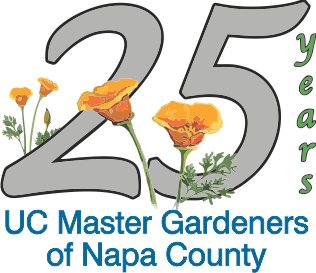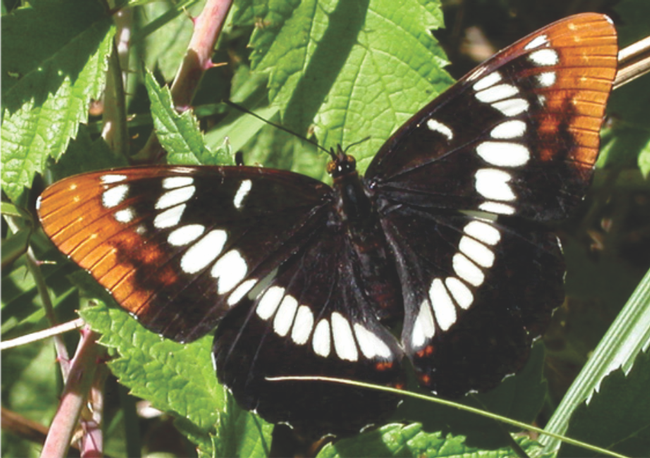by Cindy Watter
A couple of years ago I wrote a Napa Valley Register column about creating a small garden to attract pollinators. I planted monarda, red salvia, lavender, and Blue Boa agastache, in addition to a spindly little Mexican marigold (tagetes lemonii) that quickly grew enormous. I did see an increase in the butterfly population. I had always had plenty of coast fritillaries, thanks to an invasive passionflower that overgrew a trellis, but I saw many more. (My eyesight is so terrible the only way I could identify them was by taking a photo and looking up the butterfly by colors.)
Since then I have planted two more pollinator patches, and that has created a “mini” transit corridor for butterflies--they waft back and forth in the late afternoon. I also planted monarda and agastache around the yard, and planted a second Mexican marigold, which encourages more movement. None of these plants requires much water or even care, but they seem to like the occasional pruning and soil renewal with compost. Unfortunately, I only succeeded in raising one native milkweed, but it has attracted a couple of monarch butterflies. In all, I have seen six different types of butterflies in my yard this summer--the aforementioned monarch and coast fritillary, cabbage butterfly, swallowtail, red admiral, and Lorquin's admiral. I had never seen the last three before in my yard. They are fun to watch. I set up a bowl full of water with a large rock in it for a butterfly perch, and the butterflies appreciate that.
My yard tends to the messy side, and I used to jokingly call it a wildlife habitat. With a little planning and effort, however, I have attracted even more creatures and improved the appearance of my yard. Most of these plants are easy care perennials, too.
Informational links:
Art Shapiro's Butterfly Site http://butterfly.ucdavis.edu/
Purple Passionflower Passiflora incarnata L. https://plants.usda.gov/plantguide/pdf/cs_pain6.pdf
Monarda fistulosa https://plants.usda.gov/plantguide/pdf/cs_mofi.pdf
UCANR-Lavenders of California https://anrcatalog.ucanr.edu/pdf/8135.pdf
Missouri Botanical Garden-Agastache 'Blue Boa'
https://www.missouribotanicalgarden.org/PlantFinder/PlantFinderDetails.aspx?taxonid=274168&isprofile=0&
San Francisco Botanical Garden-Tagetes Lemmonii
https://www.sfbg.org/copy-of-cestrum-elegans-july-1?gclid=CjwKCAjwx9_4BRAHEiwApAt0zlTaMKOSBR8uwH0EK-R0Ol9bItqqOs0skq8EG9QfmHqjIt6jJVSnQhoCXD8QAvD_BwE
Xerces Society-Native Milkweed (Asclepias spp.) https://xerces.org/milkweed
Cabbage White - Pieris rapae https://www.butterfliesandmoths.org/species/Pieris-rapae
Lorquin's Admiral https://www.butterfliesandmoths.org/species/Limenitis-lorquini
Swallowtail https://www.butterfliesathome.com/swallowtail-butterflies.htm
Monarch https://www.butterfliesandmoths.org/species/Danaus-plexippus
Gulf fritillary https://www.butterfliesandmoths.org/species/Agraulis-vanillae
Master Gardeners are following recommended social distancing guidelines that keep everyone safe, Napa Master Gardeners are available to answer garden questions by email: mastergardeners@countyofnapa.org. or phone at 707-253-4143. Volunteers will get back to you after they research answers to your questions.
Visit our website: napamg.ucanr.edu to find answers to all of your horticultural questions.
Photo credits: Wikimedia commons public domain

